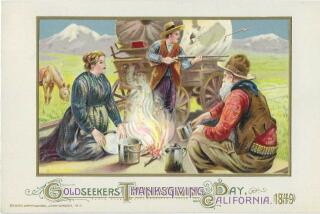A most American holiday
Americans are the most religious people in the developed world, yet Thanksgiving has become our most widely celebrated holiday precisely because it lacks any overt sectarian origins.
Christmas, Hanukkah, Passover, Easter and Ramadan all incorporate elements of hospitality, but their animating spirit is sectarian. Even Halloween and Valentine’s Day are rooted in ancient religious observances. Thanksgiving is different.
The presence of the so-called Pilgrim Fathers at the harvest festival that was the first Thanksgiving in 1621 somehow has endowed the occasion with a kind of mythic spirituality. There was, in fact, some of that because the radical Puritans who called themselves Pilgrims had abandoned first England and then Holland because they despaired of ever overthrowing the existing governments and replacing them with something “godly.” They, however, were only about half the 102 colonists dispatched to the Plymouth Plantation. The rest were along to secure the interests of the London Company, which underwrote the venture.
From the beginning, we were a people of lofty ideals and earthbound appetite.
Even the dish at the center of most contemporary Thanksgiving meals has a paradoxical dimension that is typically American. Turkey is the only poultry native to the Western Hemisphere, but until the 1940s, many Americans who celebrated a Thanksgiving meal built it around another entree — ham in many Southern homes, for example, ducks or geese in states along the Central Flyway. During World War II, servicemen were given turkey for Thanksgiving, along with lectures on the day’s significance. They took the culinary custom home with them.
In much the same way that economic mobility erased many regional differences and television ground away at regional accents, Thanksgiving as we now celebrate it is a product of the great postwar homogenization of America. This year, America’s poultry-industrial complex will produce 242 million turkeys, which will yield about 6 billion pounds of salable bird with an estimated retail value of $4.18 billion.
The contemporary commercial turkey is, in most important respects, the embodiment of the great achievement and problematic blessing that is America’s industrialized agricultural sector. Because of factory farming based on large-scale agricultural research, Americans have the opportunity to eat better and more cheaply than any other people in the world. According to figures developed by Irish economist Seamus Coffey, the average French household now spends 13.7% of its annual income on food consumed at home, a Spanish family 13.6% and an Italian household 14.5%. (A Lithuanian family shells out a whopping 23.8% to put food on the table each year.) An American household today spends just 7%.
All well and good, but, like so many of our agribusiness products, turkey has been utterly attenuated from its origins. Wild turkeys are cagey, rangy fowls; their early domesticated cousins were formidable foragers. Today’s factory-raised bird is the product of selective breeding that has grotesquely exaggerated its breast size, since most “consumers” prefer white meat, and that part of the creature also lends itself best to commercial processing. Today’s commercial turkey can’t even reproduce on its own, couldn’t survive outside a poultry shed and is virtually immobile at maturity. It also lacks most of that characteristic usually deemed requisite in a celebratory dish — flavor.
So, for the sake of what passes for tradition in a country that makes it up as it goes along, millions of Americans will buy billions of pounds of all-but-tasteless — though rich in low-fat protein — poultry and then spend untold amounts of time and effort on marinades, brines, rubs and other flavor-inducing techniques. At the end of the day, though, most people — pressed to it — probably would admit that the stuffing and gravy are their favorite part of the meal.
Whatever its gastronomical centerpiece, the Thanksgiving table’s abundance exerts an attraction on Americans of every creed, class and background because it somehow represents the paradoxical tension in which we hold the two halves of our national life. We are the people of an idea concerning the rights of man — not a nation, as others are, of blood or soil. Yet we believe that our mutually agreed-upon idea expresses itself, in some essential way, in the restless pursuit of happiness.
It is, after all, the peculiar American quality — the spur, perhaps, of our particular genius — to be at once thankful, but unsatisfied.


